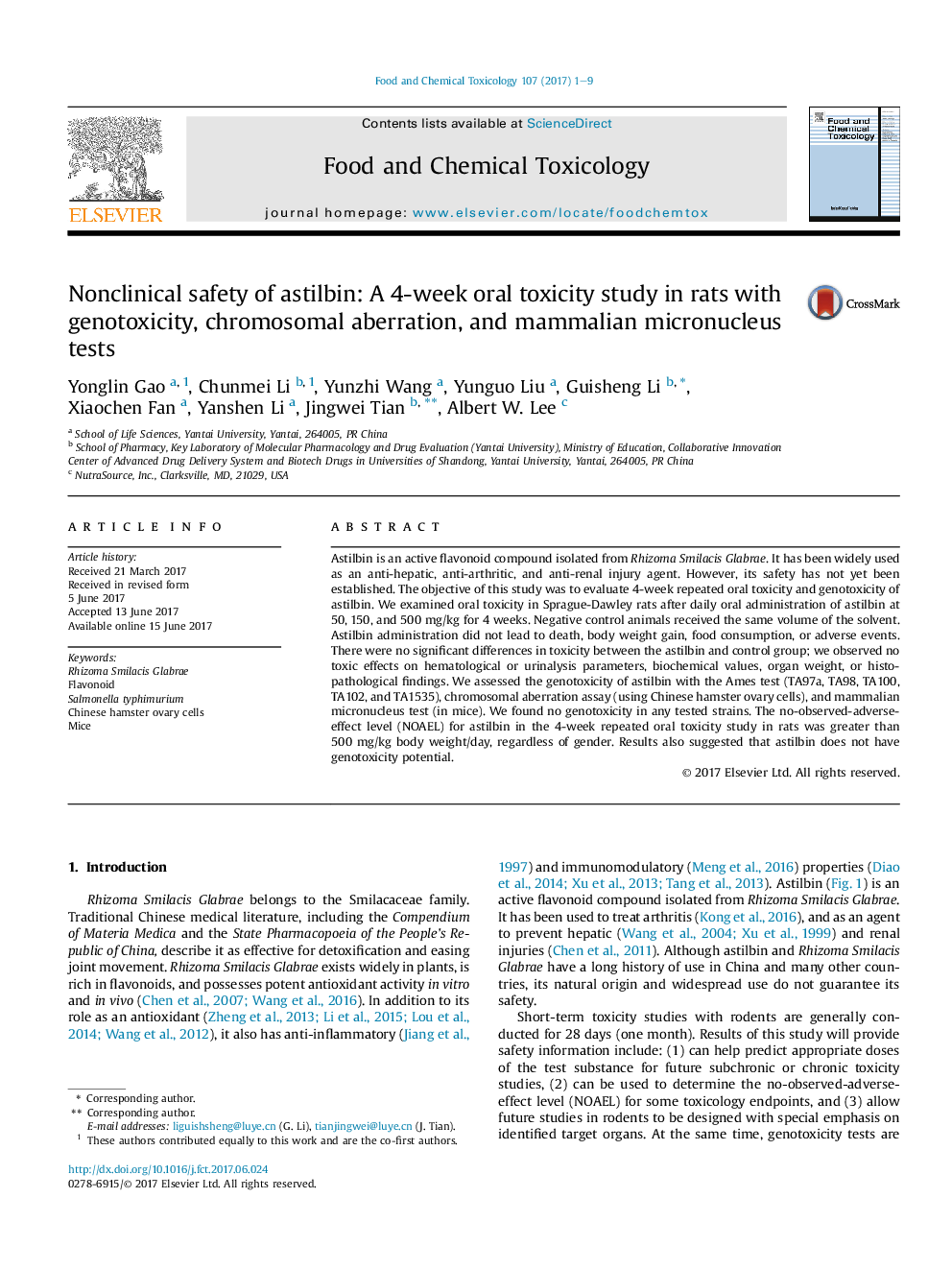| Article ID | Journal | Published Year | Pages | File Type |
|---|---|---|---|---|
| 5560058 | Food and Chemical Toxicology | 2017 | 9 Pages |
â¢Astilbin, up to 5000 μg/plate, did not induce genotoxicity in Ames test.â¢Astilbin, up to 5000 μg/mL, did not induce chromosomal aberrations in CHO-K1 cells.â¢2000 mg/kg astilbin didn't induce micronucleus formation in the bone marrow of mice.â¢In a 4-week repeated toxicity study, NOAEL for astilbin was >500 mg/kg body weight/day in rats.
Astilbin is an active flavonoid compound isolated from Rhizoma Smilacis Glabrae. It has been widely used as an anti-hepatic, anti-arthritic, and anti-renal injury agent. However, its safety has not yet been established. The objective of this study was to evaluate 4-week repeated oral toxicity and genotoxicity of astilbin. We examined oral toxicity in Sprague-Dawley rats after daily oral administration of astilbin at 50, 150, and 500Â mg/kg for 4 weeks. Negative control animals received the same volume of the solvent. Astilbin administration did not lead to death, body weight gain, food consumption, or adverse events. There were no significant differences in toxicity between the astilbin and control group; we observed no toxic effects on hematological or urinalysis parameters, biochemical values, organ weight, or histopathological findings. We assessed the genotoxicity of astilbin with the Ames test (TA97a, TA98, TA100, TA102, and TA1535), chromosomal aberration assay (using Chinese hamster ovary cells), and mammalian micronucleus test (in mice). We found no genotoxicity in any tested strains. The no-observed-adverse-effect level (NOAEL) for astilbin in the 4-week repeated oral toxicity study in rats was greater than 500Â mg/kg body weight/day, regardless of gender. Results also suggested that astilbin does not have genotoxicity potential.
Graphical abstractDownload high-res image (129KB)Download full-size image
